Neoclassical Art (Unit 2)
1/60
There's no tags or description
Looks like no tags are added yet.
Name | Mastery | Learn | Test | Matching | Spaced |
|---|
No study sessions yet.
61 Terms
1700s in the middle of the Enlightenment
When the Neoclassical period in the Academy began
Archaeology and art history
The absence of these disciplines is why Roman and Greek art are synonymous in classicism.
Rediscovery of Pompeii
Kickstarted a new obsession (Neoclassical) for all things classical
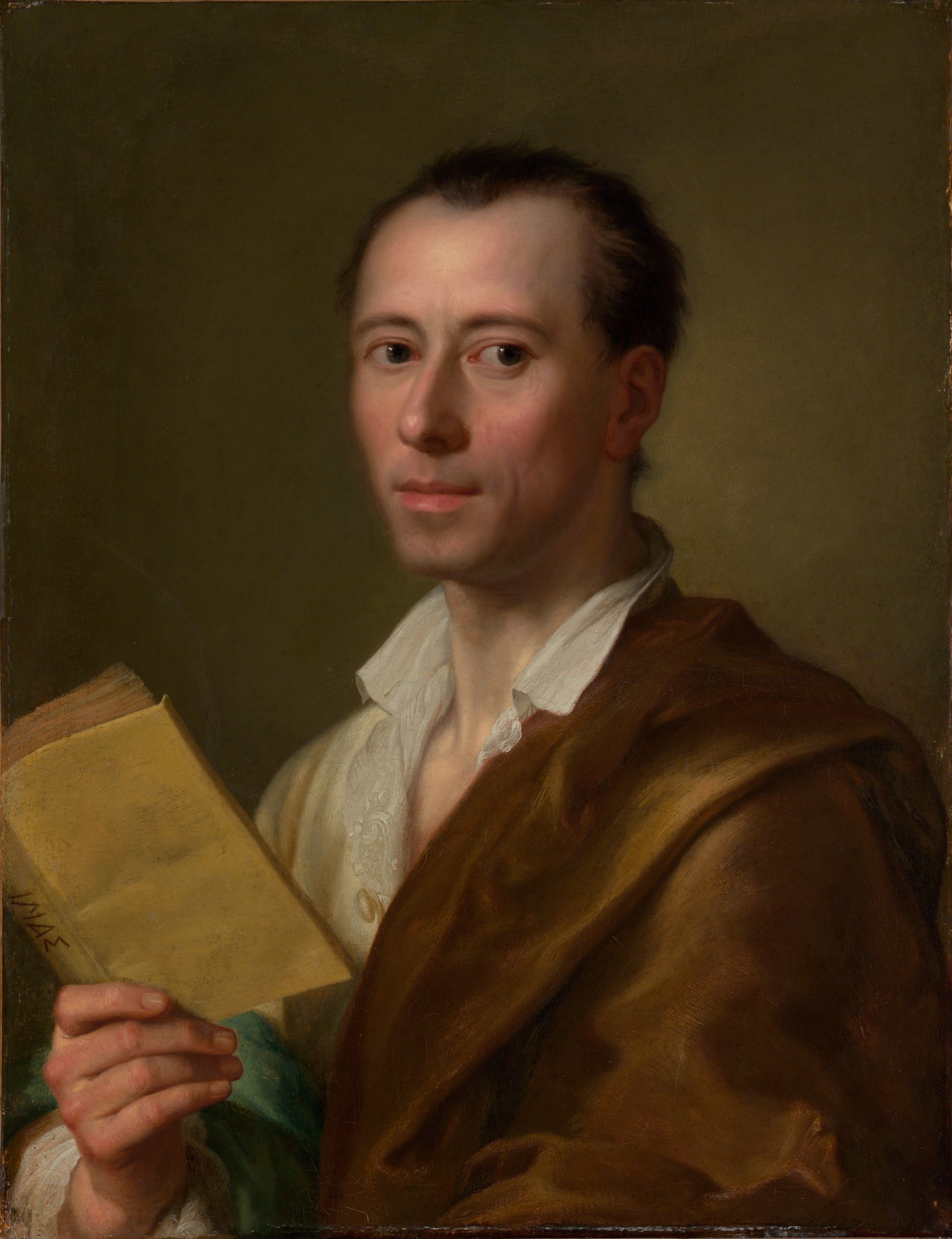
Winckelmann
Key figure to neoclassicism and art history. Authored what is considered the first art history book
The History of Ancient Art
By Winckelmann. Considered by many to be the first art history book containing initial discourses on art history
3-part progression
Winckelmann’s way of studying ancient art that lives beyond his lifetime. The first stage is primitive, the middle is the apex, and the third is the decline. Winckelmann felt that all art styles / movements went through this progression
Archaic Abstraction
The first stage in Winckelmann’s 3-part progression
Ideal naturalism
Or classical Greek art. The middle stage in Winckelmann’s 3-part progression and the highest point of a style and what all modern artists should strive toward
Overstylized decline
The third stage of Winckelmann’s 3-part progression. Followed the idea that all styles eventually declined and could not live up to their prime
Noble simplicity
The attribute that Winckelmann praised Mengs’ art for possessing
Not hiding classical influences
Mengs’ more blatant classical symbolism and inspiration. Praised by Winckelmann who believed he “got it”
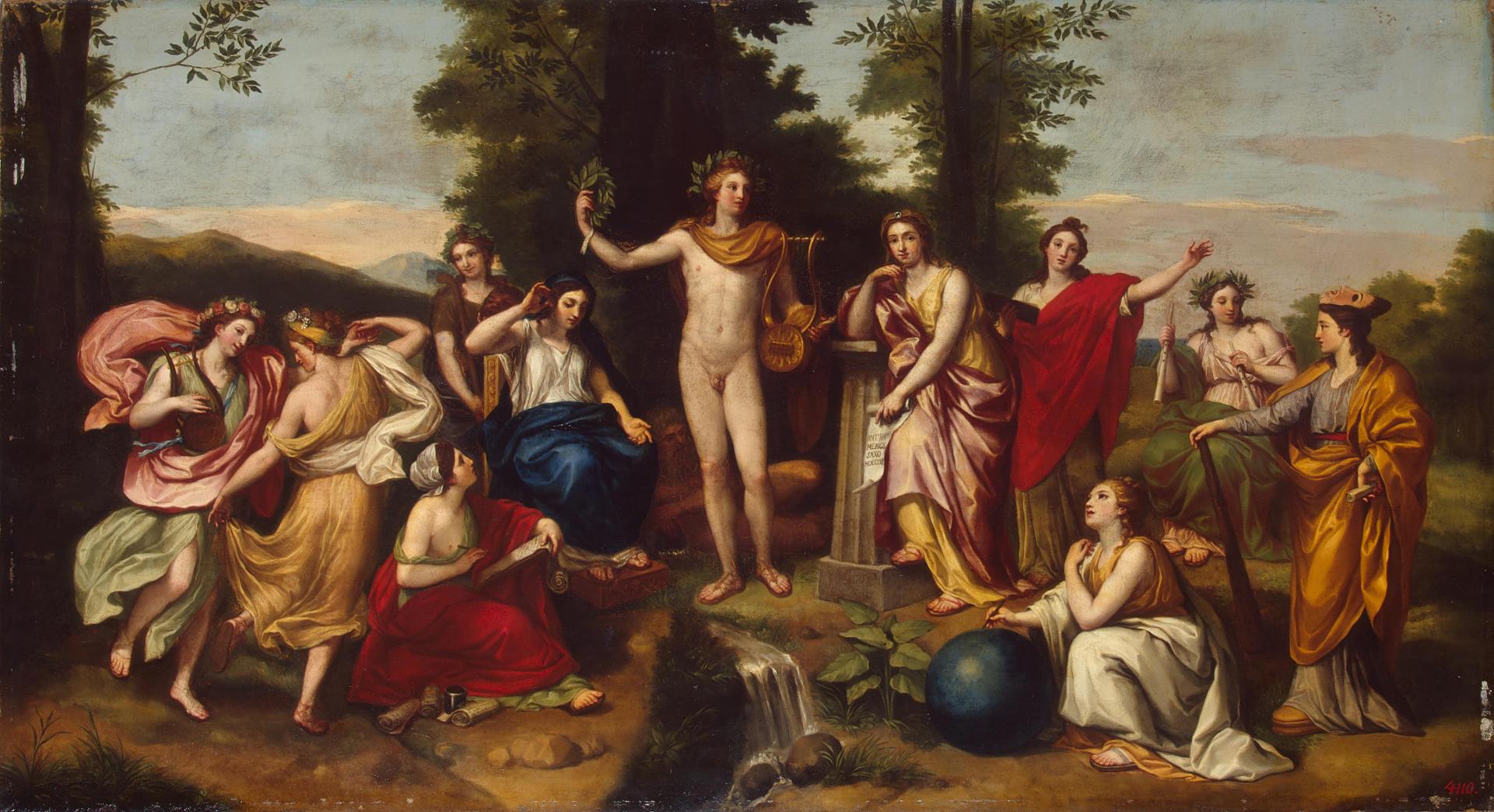
Parnassus
Mengs’ piece of the sacred mountain of Apollo surrounded by muses
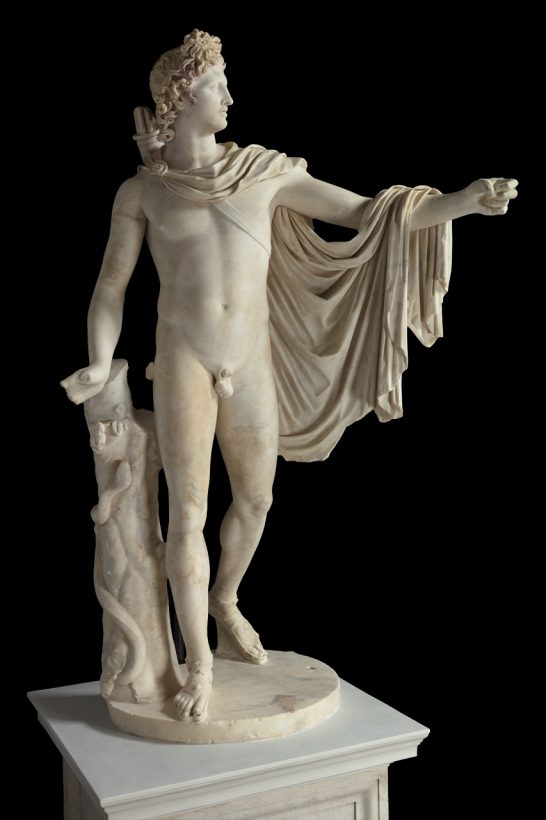
Apollo Belvedere
The Roman copy of an original Greek statue that Mengs directly took from in his piece, Parnassus
Female nudes
Present in the Rococo but not in Neoclassical work. Seen as a distraction and something that appealed to viewers’ sensibilities instead of their intellect
Male nudes
Everywhere in Neoclassical art. Inspired by the Greeks’ belief that the male body was the perfect body and a representation of the ideal human
Grand Tour
A very Enlightenment thing. Young aristocrats would travel and tour the cultural capitals of Europe: Rome, Florence, Madrid, Paris, London, etc. and would learn culture by osmosis. Helped spread Neoclassicism by igniting interests in classicism
Best rules from the best masters, learn from the past
The central premises for formal art academies starting with the French Academy
Academies of Art
Helped spread Neoclassical ideas. By the 1700s, every country that hoped to be a cultural player had one of these, and they are now seen as preservers of tradition and good morals. They assume more power during the Neoclassical era, and their grip on the art world is ironclad
Moralistic art
A Neoclassical idea that good art could make one a better person (and bad art would do the opposite). Stemmed from the idea that experiences better oneself
Academy anatomy studies
Done by instructing students to draw bits of a classical statue until their efforts were satisfactory (which meant assembling the statue further). Once they had achieved technical mastery, they were then allowed to work on live models
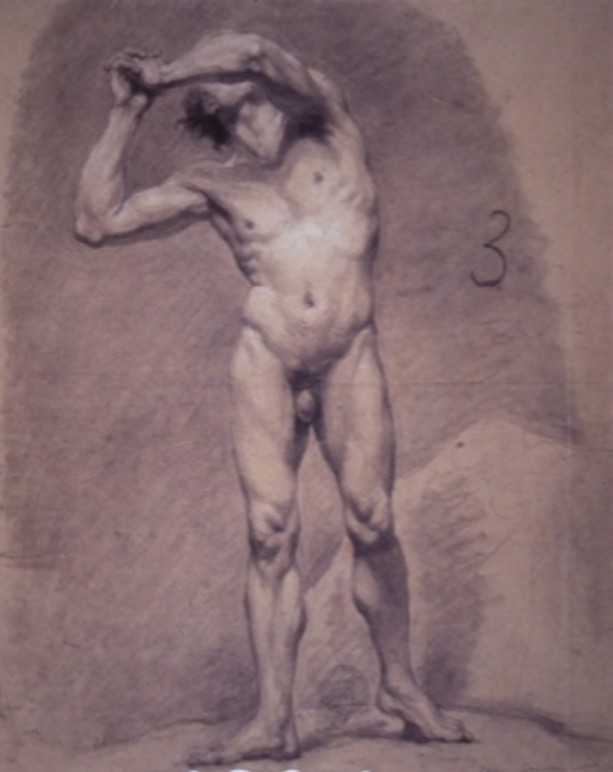
academies (senior theses)
The final for students of formal art academies, where they would render a live male model in the form of a classical statue, essentially correcting nature
Women
Were often not admitted to formal art academies since the curriculum necessitated sketching male nude models (as well as being generally discouraged from the career path and encouraged to take care of children instead). Those who were artists were pushed into portraits of children and dogs as well as still lifes as they did not involve male nude models. Those who were wealthy could afford to be outside this norm
Angelica Kauffman
One of the few women who made it into a formal art academy during the Neoclassical period. Made a living as a history painter tackling tales, myths, and stories from the classical past that emphasized womanly values (which meant she never needed male nude models in the neoclassical view)
Rococo in Great Britain
Never fully took off since it was seen as a French institution, and the country wanted nothing to do with France. Poked fun at the movement; their flavor of Neoclassicism functioned as an illustration of the reality of the fancifulness of it
Hogarth
Neoclassical artist. Set up a painting series about moral decay that followed an aristocratic family that fell apart: unhappy marriage, infidelity, flagrant spending, and the eventual fate of the countess who died in debt. A clear satire on Rococo values
The Grand Manner
Sir Joshua Reynolds’ new art form. Neoclassically-inspired. Doubled down on portraiture suggesting information about its subject and aimed to fuse history painting and portraiture
Sir Joshua Reynolds
One of the earliest champions of his British Neoclassical style. Became head of the British Academy and delivered a series of lectures where he laid out his vision for a new British art form: The Grand Manner
Neoclassicism in Britain
Not as political as it is in France. Involved itself in traditional concerns involving class and birthright. Avoided ruminations on political issues
Neoclassicism in France
The style of the revolution
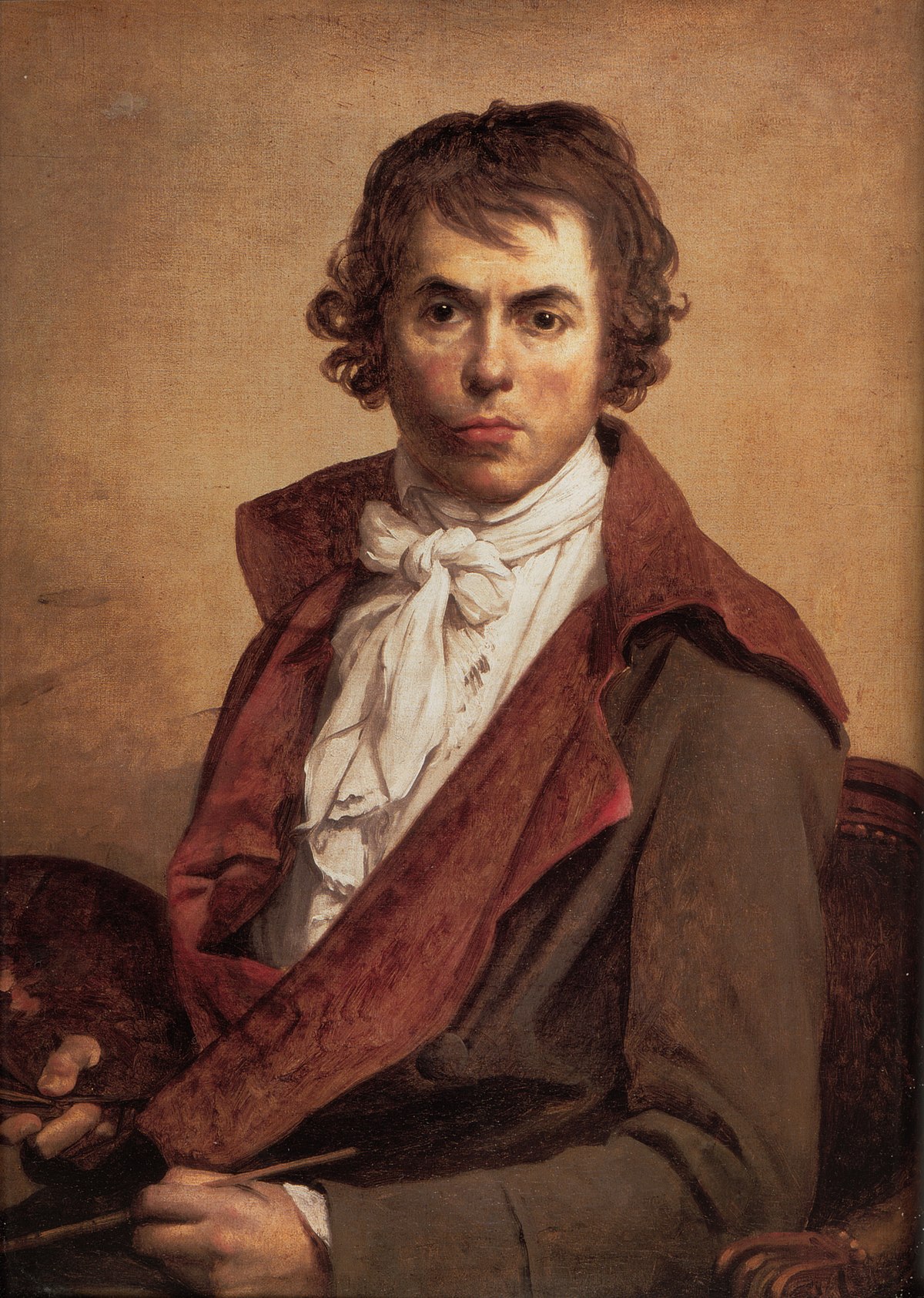
Jacques-Louis David
Leader of the French Revolution and the biggest name in French Neoclassicism. Began painting Rococo art but revolutionized his style after his trip to Rome
Rome Prize
Incredibly prestigious scholarship that sent French artists to Rome on the government’s bill. Reserved for the top artists. Awarded to David and changed his art and outlook forever
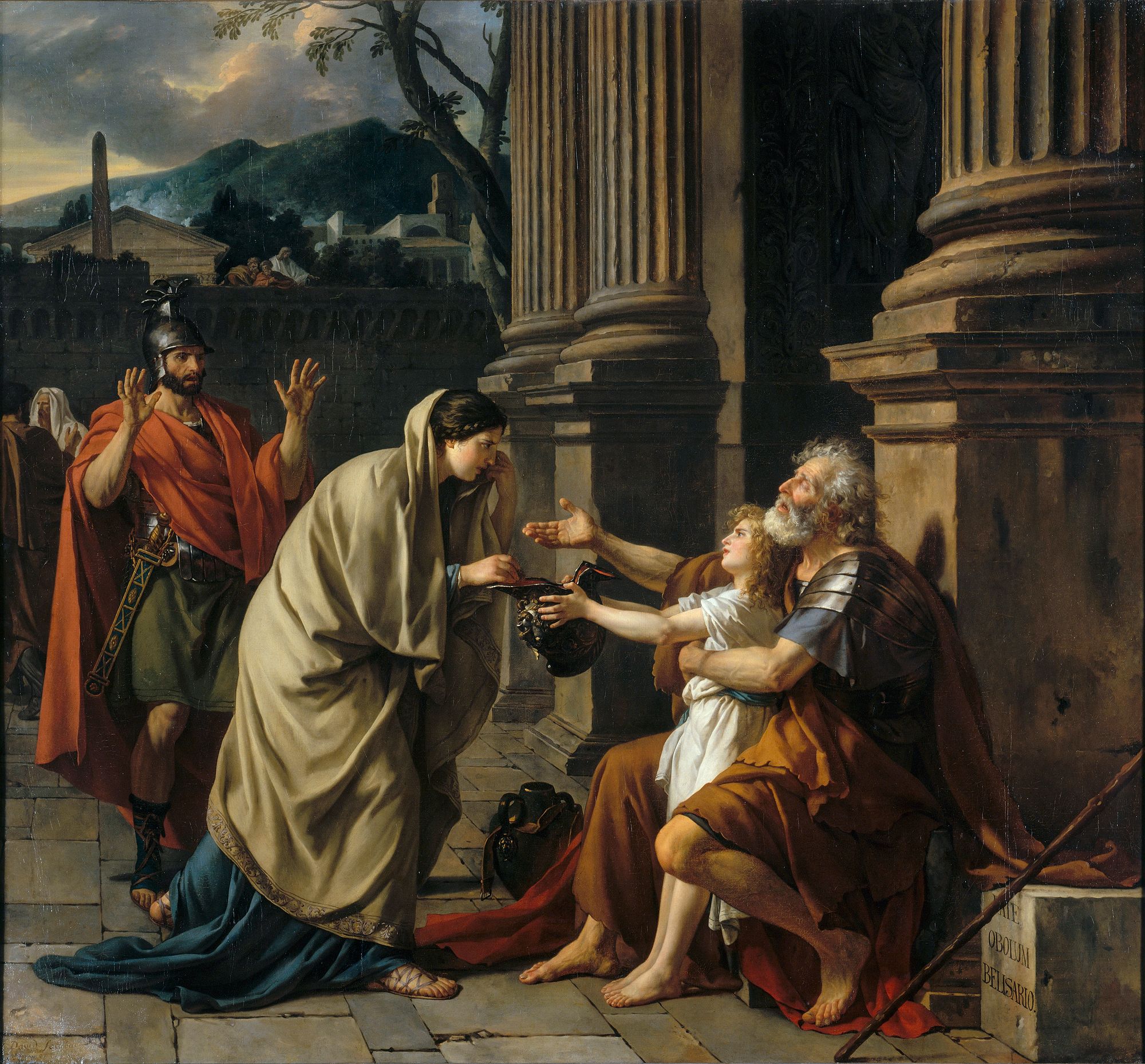
Belisarius Begging for Alms
David’s return work and his acceptance piece into the Salon of 1781. Incredibly controversial for its overt messaging in its criticism of the Royal Court in France by comparing it to the scheming nobles of the Imperial Court who got Belisarius fired. Made David himself a sensational radical
Salon of 1781
The event where David’s controversial work criticizing the French Royal Court was displayed
Caravaggio
The Italian Baroque artist whom David studied extensively during his trip to Rome, resulting in his radical style experimentation and change
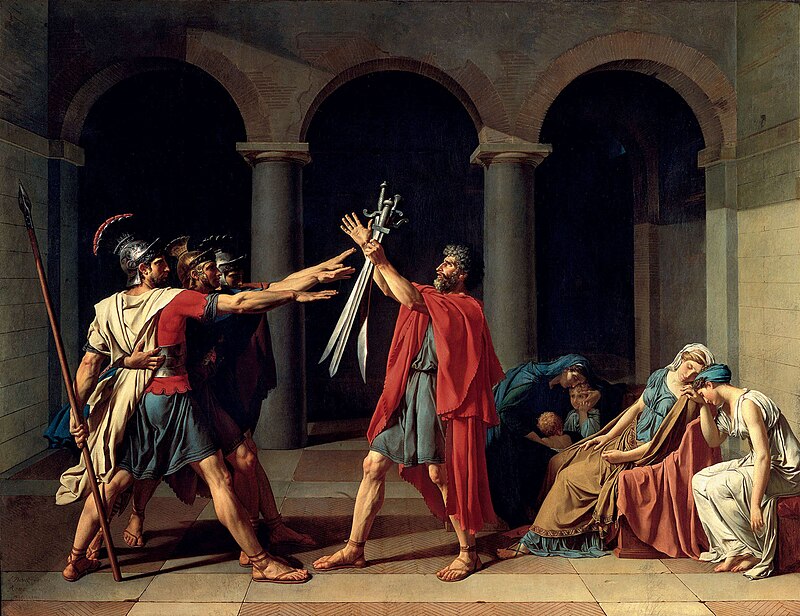
Oath of the Horatii
Reimagination of a Roman story. The 3v3 battle is three brothers against three brothers who are also the brothers of the formers’ wives. Only one Horatii brother survived the ordeal, and he kills the anguished women for their lack of patriotism. Hot painting and pro-revolutionary
Statement canvases
Become popular during the Neoclassical period. The larger a work, the more important it is
Horatii
Fought their cousins or brothers-in-law in the classic Roman story adapted by David. The surviving brother who kills the grieving women is meant to be a heroic figure to encourage the audience to do extreme things in the name of nationalism
Allegiance to a nation
A revolutionary idea in David’s Oath of the Horatii. Direct rebellion against the French monarchy, since it was specifically not allegiance to a king
Renaissance conventions
Apparent in David’s Oath of the Horatii. Grid pattern, use of triangular composition, and the repetition of 3s.
Rejection of the Rococo
Perpetuated by David’s pieces. No fuzziness or receding background with subjects in the picture plane and heavy tenebrism. No distractions. Wants the viewers to reject Rococo and prepare themselves to defend their nation
Bastille
Taken in 1789. Considered the apex of the French Revolution
New Republican government
Established post-revolution. Sets David in charge of the first Salon and the primary mover in the art of the future. Led by other Jacobins
Jacobins
The extremist wing of the French revolutionaries. Wanted all aristocrats dead and churches destroyed and advocated for a complete eradication of the old society. Found themselves in charge immediately following the revolution
Marat
Jacobin journalist who was tasked with purging anti-revolutionary sentiment in post-revolutionary France. Would send dissenters (or traitors) and their associates to be executed via guillotine. Eventually assassinated
Bathtub
Where Marat spent most of his time because of his itchy skin
Reign of Terror
Followed the French Revolution. Mass executions of those who opposed the revolutionaries in power. Led by Robespierre and other Jacobins in the government
The Death of Marat
By David, a friend of his who agreed with him politically. Presented Marat as a Christ-like figure struck down by the evilness of the royalists and their sympathizers. Portrayed as kind, gentle, and pathetic man of the people. Illustrated writing a letter that emphasized his philanthropy. Misconstrued the identity of his assassin as well as his own character and ignored the deaths he directly caused
Marat quote
“Society must be purged of its corrupt limbs. Five or six hundred cut off heads would have guaranteed freedom and happiness”
Marat’s assassin
Although interpreted as a royalist by David and other Jacobins, she was sympathetic to the revolution’s cause, only opposing the current leaders whom she believed corrupted the revolutionary spirit. Acted to protect her family members that would have otherwise been executed
David’s style
Although he claimed his work always sought a “noble Greek style,” his art was more stylistically similar to the Baroque works of Caravaggio using a similar style and techniques like tenebrism and only bore similarities to Greek and Roman art in subject matter
David’s politics
Glossed over a bit but are inseparable from his work. Evident that he is advocating for an extremist version of the revolution. Seen clearly in The Death of Marat where he went through various efforts to honor him
Neoclassicism style
Contains multitudes; not just Greek art / Roman art but Greek and Roman art filtered through the lens of the Italian Baroque, lacking a pure connection to classical art. Although artists learned from Greek and Roman sculpture, “learning the best rules” referred to learning from Renaissance and Baroque art and studying how those artists used their version of classicism
Robespierre
A jacobin and the main architect behind the Reign of Terror. About one year after David finished The Death of Marat, he is overthrown and executed
Minister of propaganda
David’s role/responsibility in the Reign of Terror
Napoleon Bonaparte
Spared David’s life after he is sentenced to death. Appoints him as his official painter of the new government. Although it differed from his politics, David faced imprisonment if he refused the offer
Its name recognition and popularity
What Napoleon appreciated about Jacques-Louis David’s style

Napoleon Crossing the Alps
A propaganda piece by David for Napoleon comparing him to the long history of conquerors who charged over the alps. Includes “Bonaparte,” “Hannibal,” and “Carlos Magnus” at the bottom of the piece
Hannibal
The Carthaginian general who invaded the Roman Republic
Carlos Magnus
aka Charlemagne
David’s Workshop
Arguably David’s most long-lasting contribution to the arts above his style. He trained an immense number of younger artists, meaning his ideas and aesthetic last well beyond his lifetime
Ingres
Jacques-Louis David’s most famous pupil